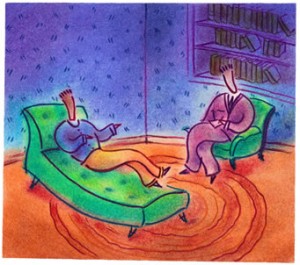A group of German investigators has published a study othe correlation between the inability to express emotions (alexithymia) and outcome in psychotherapy in the third 2008 issue of Psychotherapy and Psychosomatics.
About 25% of all patients seeking psychotherapeutic treatment are considered to be alexithymic. Alexithymia has been assumed to be negatively associated with therapeutic outcome. On the other hand, it is unclear to which extent alexithymia itself may be modified by psychotherapeutic interventions.
From 414 consecutively admitted inpatients, 297 were followed up after 4 weeks (t1) and after 8-12 weeks (t2) upon discharge. Patients were treated with psychodynamic group therapy in a naturalistic setting. The Toronto Alexithymia Scale (TAS-20) and the Symptom Checklist-90 were administered.
Twenty-seven percent of the patients were alexithymic (TAS-20 61) at baseline. Multivariate models with repeated measurements indicated significant changes in Global Severity Index of the Symptom Checklist-90 in both alexithymic and nonalexithymic subjects. However, alexithymic subjects had significantly higher Global Severity Index scores than nonalexithymic subjects at t0, t1 and t2 (p < 0.001). The TAS-20 scores demonstrated a high relative stability in the total sample. However, in the alexithymic group, the TAS-20 scores changed considerably from baseline to discharge [66.3 (SD = 4.7) to 55.9 (SD = 9.9); t = 8.69; d.f. = 79; p < 0.001]. At the end of the study, the Authors concluded that the inpatient treatment program including psychodynamic group therapy significantly reduced psychopathological distress and alexithymic features in alexithymic patients. Still, these patients suffered from higher psychopathological distress at discharge than nonalexithymics. Therefore, alexithymic features may negatively affect the long-term outcome.
Grabe,H.J.; Frommer, J.; Ankerhold, A.; Ulrich, C.; Gröger, R.; Franke, G.H.; Barnow, S.; Freyberger, H.J.; Spitzer, C. Alexithymia and Outcome in Psychotherapy. Psychother Psychosom 2008;77:189-194
Source: Psychotherapy and Psychosomatics via Alpha Galileo

